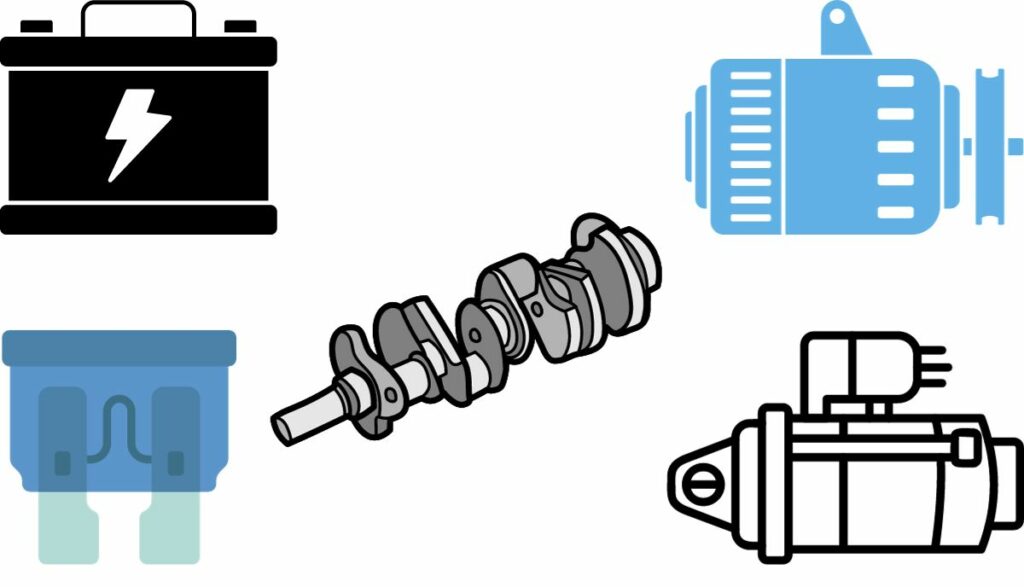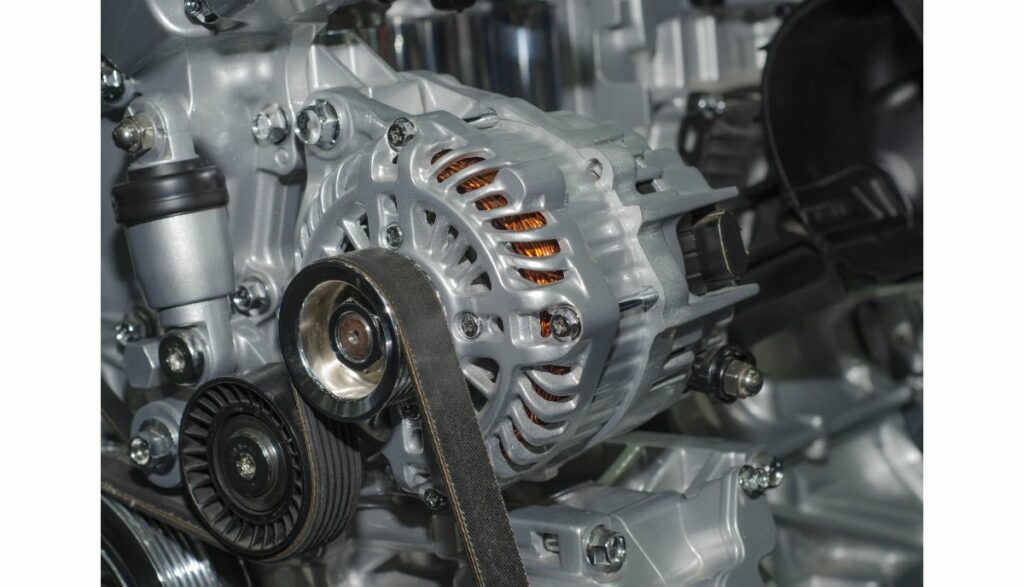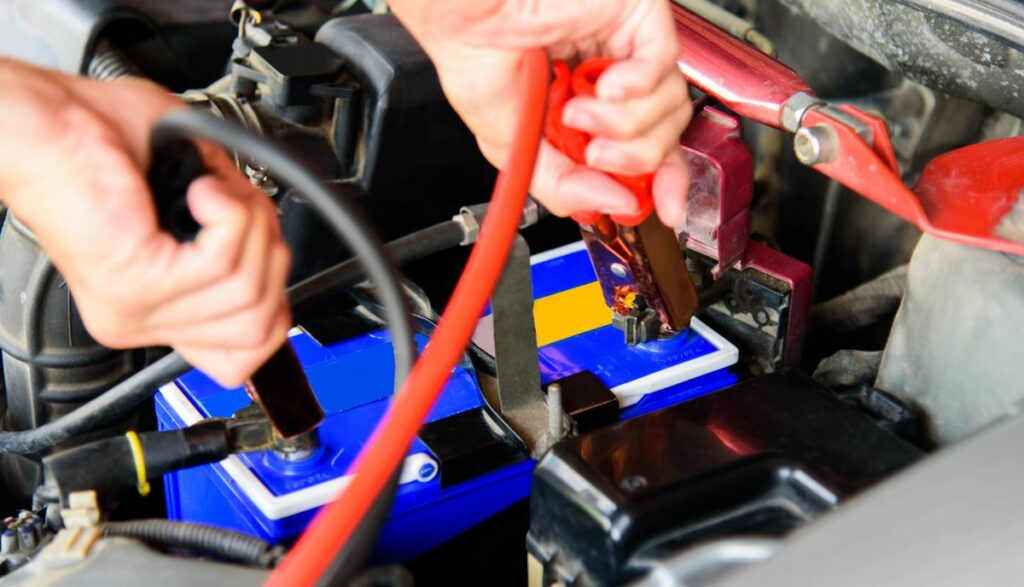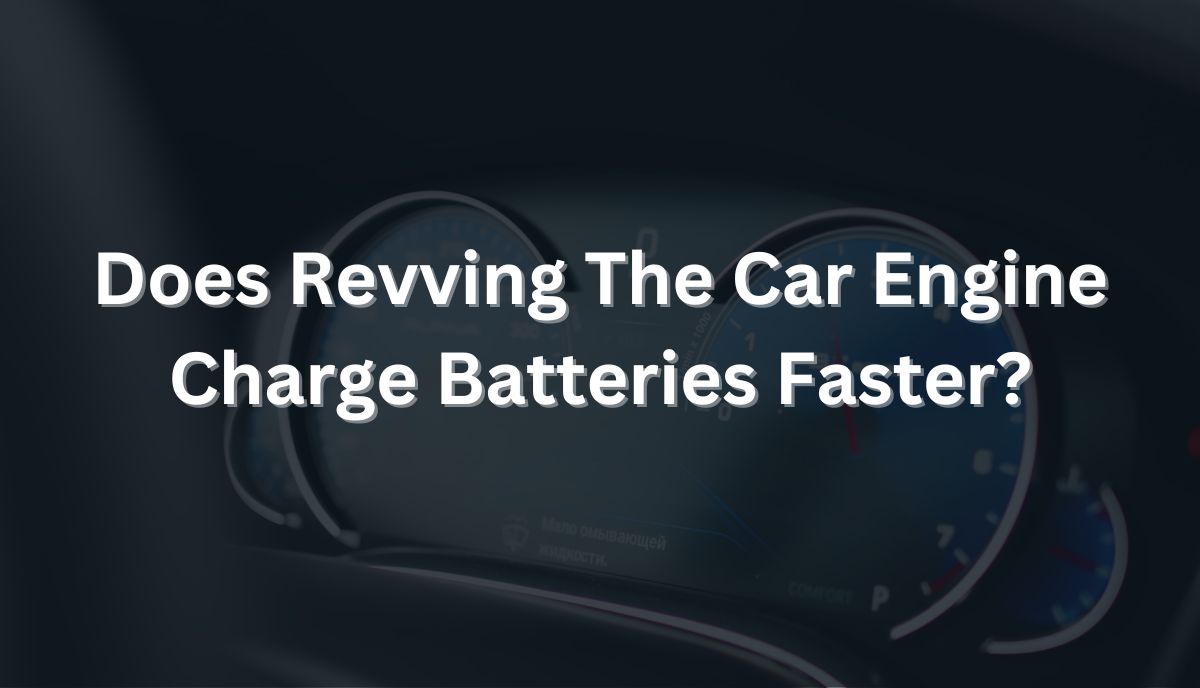While the battery starts the engine, it doesn’t run the electronics. That responsibility falls to the alternator. It will also charge the battery. Does that mean the alternator will charge the battery faster when you rev the engine?
An alternator’s voltage output is constant (14.4 – 14.6). However, the output current will change because cars have a crankshaft that turns the alternator using a belt. The crankshaft’s turning speed will affect the alternator’s turning speed. This, in turn, will influence the amount of current the alternator produces. Therefore, revving the engine can increase the alternator’s output, which elevates the rate at which the battery charges.
You can also observe that revving can jump-start a dead battery. However, the increase in voltage is small (only a few hundredths of a volt). It might be insufficient to rejuvenate a dead battery. You’re better off connecting the battery to a charger and leaving it alone for a little while.
I recommend turning every electrical accessory in your car off before attempting to jump-start another vehicle’s battery.
Some modern cars are sophisticated enough to increase the alternator’s power when you need it. Revving is unnecessary.
What Are The Key Components Of A Car’s Charging System?

- Battery
- Alternator
- Belt
- Crankshaft
- Voltage Regulator
- Wires
- Starter Motor
- Ignition Key
- Fuse
How They Work Together To Charge The Battery?
- The battery stores electrical energy. It will also run the car’s accessories when the engine stops.
- The battery supplies the current that fires the spark plugs. This ignites the air/fuel mixture. You can’t start the engine when the battery is dead. You can turn the key in the ignition, but nothing will happen.
- Every car has a fuse that protects the electrical system by blowing in response to excess current.
- The alternator is the heart of the charging system. The crankshaft uses a V belt to turn the alternator. The alternator converts that rotating energy into an alternating current. The diode bridge rectifies the current.
- The voltage regulator manages the alternator’s output. It keeps the voltage within the appropriate range (13.5 – 14.5). Without the regulator, the alternator’s output can overwhelm the vehicle’s electrical components.
- The current travels between the charging system’s parts via wires.
- This GM Genuine Parts And AC Delco video shows the workings of a car’s starting and charging systems.
How The Alternator Generates Electrical Power?

- Kia describes the alternator as a vital automotive part that turns mechanical energy into electrical energy. It uses a stator and rotor to produce an alternating current.
- The stator is a stationary component attached to the alternator’s casing and consisting of an outer frame, core, and winding.
- The rotor spins inside the stator. This matters because the stator has conductive copper wiring. The rotor, which is cylindrical and surrounded by magnets, moves over the wiring to make electricity.
- Alternators have a voltage regulator that controls the voltage output.
- They also include a diode rectifier that turns the voltage into a form the battery can use.
- The fan allows the alternator to operate efficiently by eliminating the excess heat.
Real Pars has published animated pictures of an alternator and its parts. They reveal the workings of the alternator in vivid detail.
How Its Output Varies With Engine Speed (RPM)?
This MATEC Web Of Conferences Paper (Faculty of Mechanical Engineering, University Teknikal Malaysia Melaka) investigated the impact of an alternator’s speed on the car’s charging system.
The study concluded that an alternator produces more power the faster it spins. The more power the alternator generates, the quicker it charges the battery.
The Role Of The Alternator In Replenishing The Battery
The battery stores electricity. However, that electricity drains over time. A Battery dies within two months in a parked car. The alternator prevents this outcome by charging the battery while the engine runs. Alternators have diodes that turn AC into DC, which the battery can use.
Factors That Determine The Rate At Which A Battery Charges
An alternator can charge a car battery within thirty to ninety minutes. The exact duration will depend on one or more of the following factors:
- Battery Health
Old and defective batteries take longer to charge than their newer, healthier counterparts. Faulty batteries that charge quickly will discharge at a similar rate, if not faster.
- Alternator Output
Alternators are similar to conventional phone chargers. The higher their charging capacitor, the shorter the charging time.
- State of the Car
It usually takes longer to charge the battery when you idle the car, at least compared to driving. You may extend the charging duration by an extra hour, maybe more. You can blame this phenomenon on an idling vehicle not generating as many RPMs as you get when you drive.
- Temperature
Extreme temperatures tend to increase the charging duration.
- Number of Running Accessories
The more accessories you run, the longer the charging time.
Engine Revving And its Impact On Alternator Speed
- Revving makes the engine turn faster. If you look at the tachometer, you will see the engine’s RPM increase.
- The engine speed elevates the alternator speed.
- The faster the alternator turns, the more electricity you get. The voltage will stay the same, but the quantity of current will go up.
The Relationship Between Higher RPMs And Alternator Output
- This Balmar DC Charging Solutions table shows the relationship between the RPM and alternator output. As the engine RPM increases, so does the alternator RPM.
- It is worth noting that you don’t need to reach the highest RPM to get an engine’s maximum power.
The RPM Range At Which The Alternator Is Most Efficient In Charging The Battery
A Materials Science And Engineering paper (Faculty of Mechanics, Craiova, Romania) assessed the power an alternator supplies to the battery at different speeds. You can see in Table 1 that the output voltage crosses the 14V mark at an alternator speed of roughly 1,200 RPM. At that point, the alternator is charging the battery.
Arco Marine agrees that charging occurs at around 1000 RPM. The alternator attains its maximum output at 5000 RPM. Motor Trend expects the alternator to spin at 2,400 RPM to charge the battery while the engine idles.
If you check the vehicle’s documentation, it will tell you the RPM range within which the alternator should operate.
How Excess Engine Revving Can Be Inefficient?
Revving the engine to charge a battery faster sounds rational. However, it is highly inefficient. Many laypeople ignore the following concerns:
- Revving the engine increases the RPM. The higher the RPM, the more power you get from the engine (to a point).
- The RPM is a measure of the number of revolutions the crankshaft makes per minute.
- The car cannot turn the crankshaft without burning an air/fuel mixture.
- In other words, a crankshaft with more revolutions burns a higher quantity of fuel.
- The opposite is also true. A lower RPM results in the consumption of less fuel.
- Therefore, you will waste fuel by revving the car to charge the battery. You’re better off driving the vehicle to and from your destination while allowing the battery to charge at a slower pace.
Keep in mind that revving will also increase the vehicle’s toxic emissions, not to mention annoying passersby with the noise. Don’t be surprised if the local authorities increase your expenses by handing you a financial penalty.
The Trade-Off Between Faster Battery Charging And Increased Fuel Consumption.
Most people don’t mind spending a few extra dollars to charge the battery at a faster rate. And in truth, the increase in fuel consumption isn’t quite as significant as some laypeople think.
That said, rather than wasting fuel, you’re better off buying a battery charger. Charging your battery overnight using the wall socket will cost you a few cents. You can also install a trickle charger that prevents the battery from dying when you place the car in storage.
How Charging Practices Can Affect The Lifespan Of A Car Battery?

Most laypeople don’t have charging practices. They don’t deliberately charge the car battery. The alternator performs this function independently. Even when you connect a trickle charger, it is unlikely to damage or lower the battery’s lifespan through prolonged exposure.
If overcharging or undercharging concerns you, buy a smart battery charger. It adjusts the charging process in response to the temperature. Otherwise, a trickle charger will maintain the battery during the winter. Pair it with a heater to keep freezing conditions at bay. Try to keep the following in mind:
- Avoid short trips. Longer trips allow the alternator to fully charge the battery.
- Don’t leave electrical accessories on when you shut the engine off.
- Make sure the battery terminals are secure.
- Clean corroded terminals.
- Don’t park the car for extended periods unless you have a smart charger to maintain the battery.

